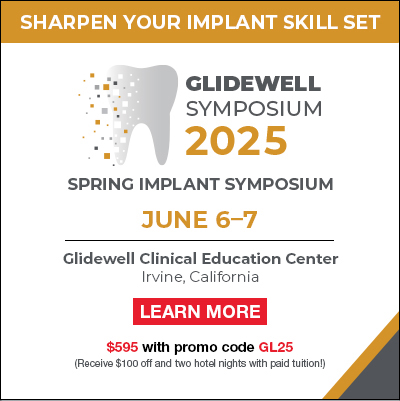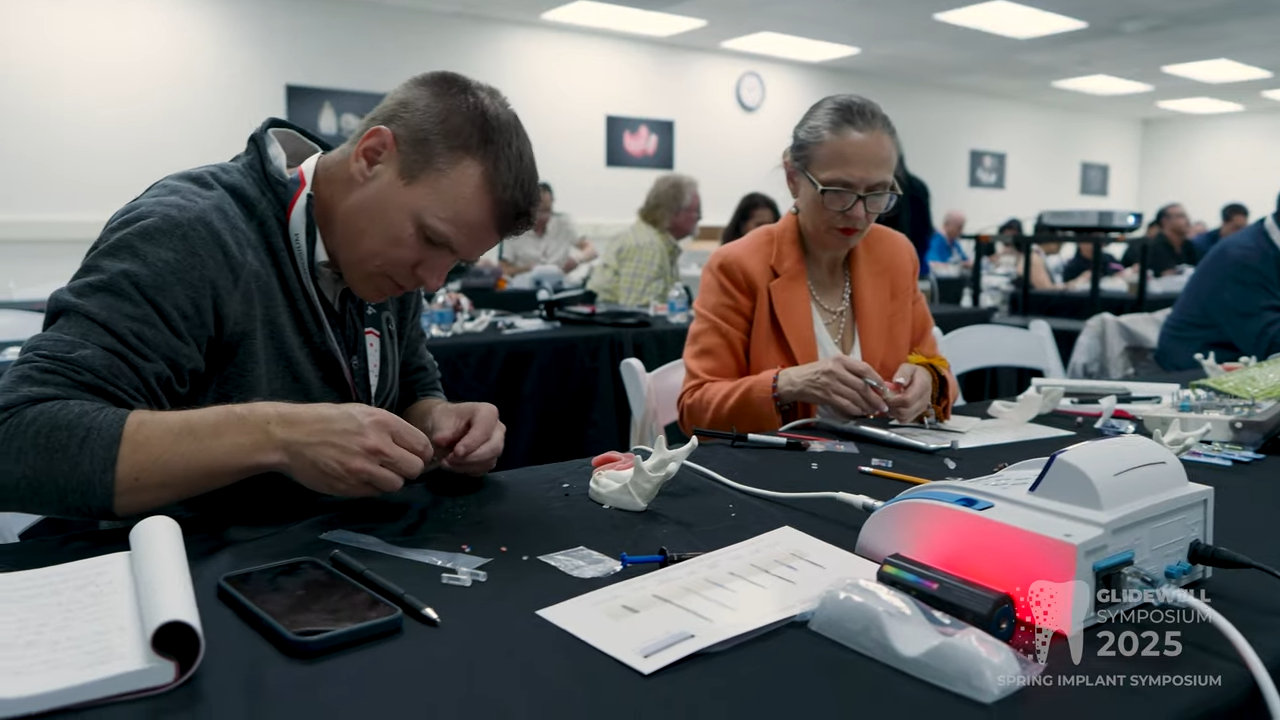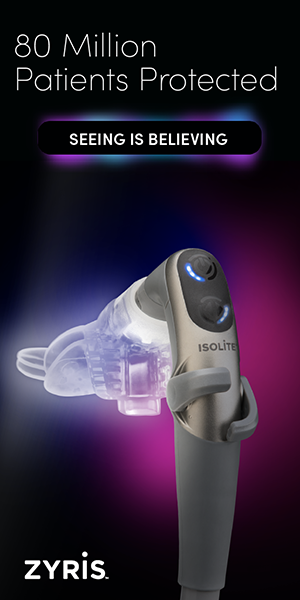The differential diagnoses for an asymptomatic cyst-like radiolucent lesion of the anterior mandible include radicular cyst, focal periapical cemental dysplasia type I (cementoma), residual cyst, odontogenic keratocyst, central giant cell granuloma, lateral periodontal cyst, amelo-blastoma, primordial cyst, odontogenic myxoma, hemangioma, clear cell odontogenic carcinoma, anterior lingual mandibular salivary gland defect, and labial and/or lingual bone concavity/depression.1-7 The lesions that are listed as part of the differential diagnosis all can have a unilocular radiolucent radiographic appearance with an asymptomatic clinical history.
CASE REPORT
 |
 |
| Figures 1a and 1b. Periapical radiographs demonstrate a spherical radiolucent lesion, which appears to be associated with the apical area of the tooth root. |
 |
 |
| Figure 2a. Periapical radiograph demonstrates that the radiolucent lesion is superior to the root apex. Figure 2b. Periapical radiograph demonstrates the radiographic appearance at the initiation of therapy. |
A 34-year-old African American female was referred to an oral medicine private practice for consultation regarding a radiographic lesion. The medical history was not contributory to the chief complaint, and the patient was in apparent good health. The chief complaint was “suspicious area on lower tooth.” There were no symptoms. The patient was undergoing orthodontic therapy to reposition her teeth to enhance implant placement for a missing mandibular left lateral incisor. The radiographic lesion was found on a routine dental radiographic series in March of 2002. Clinically, there was no lymphadenopathy nor other clinical signs or symptoms. The radiographs (Figures 1a and 1b) revealed a well-defined/demarcated but not well-corticated radiolucent cyst-like apical lesion of the mandibular left central incisor. The inferior aspect of the lesion was at the level of the root apex. The right mandibular cuspid tested vital, as did the left mandi-bular central incisor (the tooth in question). All other hard and soft oral tissues ap-peared to be within normal limits.
DISCUSSION
The patient in the present case was being treated for a missing mandibular left lateral incisor tooth, which resulted in spaces between the mandibular central incisors and between the mandibular left central incisor and the mandibular left canine. The treatment plan was to orthodontically reposition the mandibular left central incisor medially adjacent to the mandibular right central incisor, which would re-establish the space of the missing mandi-bular left lateral incisor. Once the space was created, the plan called for placement of an implant. However, the radiographic appearance of an apparent lesion necessitated further inquiry. It appeared that the movement of a tooth into an area of thinned bone produced a radiographic appearance consistent with a cystic lesion.
CONCLUSION
This case illustrated a labial bone concavity in the anterior mandible. There was a large list of lesions that comprised the differential diagnosis. Exploratory surgery to biopsy the apparent lesion indicated a diagnosis of man-dibular labial bone concavity. This condition is an anatomical variation and may have significant implications for implant dentistry.
References
- Giunta JL. Labial bone concavity. J Mass Dent Soc. 2002;51:24-26.
- Kanas RJ, DeBoom GW, Jensen JL. Inverted heart-shaped, interradicular radiolucent area of the anterior maxilla. J Am Dent Assoc. 1987;115:887-889.
- Cataldo E, Giunta JL. A clinico-pathologic presentation. Labial bone concavity. J Mass Dent Soc. 1984;33:56.
- Philipsen HP, Takata T, Reichart PA, et al. Lingual and buccal mandibular bone depressions: a review based on 583 cases from a world-wide literature survey, including 69 new cases from Japan. Dentomaxillofac Radiol. 2002;31:281-290.
- de Courten A, Kuffer R, Samson J, et al. Anterior lingual mandibular salivary gland defect (Stafne defect) presenting as a residual cyst. Oral Surg Oral Med Oral Pathol Oral Radiol Endod. 2002;94:460-464.
- Katz J, Chaushu G, Rotstein I. Stafne’s bone cavity in the anterior mandible: a possible diagnostic challenge. J Endod. 2001;27:304-307.
- Giunta JL. Gingival cysts in the adult. J Periodontol. 2002;73:827-831.
- Stafne EC. Bone cavities situated near the angle of the mandible. J Am Dent Assoc. 1942;29:1969-1972.
- Arensburg B, Kaffe I, Littner MM. The anterior buccal mandibular depressions: ontogeny and phylogeny. Am J Phys Anthropol. 1989;78:431-437.
- Kaffe I, Littner MM, Arensburg B. The anterior buccal mandibular depression: physical and radiologic features. Oral Surg Oral Med Oral Pathol. 1990;69:647-654.
- Littner MM, Kaffe I, Arensburg B, et al. Radiographic features of anterior buccal mandibular depressions in modern human cadavers. Dentomaxillofac Radiol. 1995;24:46-49.
Acknowledgement
The authors wish to thank Dr. Neil Sushner for referral of the patient for the initial work-up.
Dr. Farquharson is an assistant professor in the department of oral diagnostic services at Howard University College of Dentistry, Washington, DC. He can be reached at afarquharson@howard.edu.
Dr. Brown is a professor in the department of oral diagnostic services, Howard University College of Dentistry, and a clinical associate professor in the department of otolaryngology, Georgetown University Medical Center, Washington, DC. He can be reached at rbrown@howard.edu.
Dr. Haynes is an assistant professor in the department of orthodontics, Howard University College of Dentistry, Washington, DC. She can be reached at (202) 806-0365 or ejhaynes@howard.edu.
Dr. Kaufman maintains a private practice in periodontics in Washington, DC. He can be reached at (202) 223-2211 or dcperio@aol.com.




